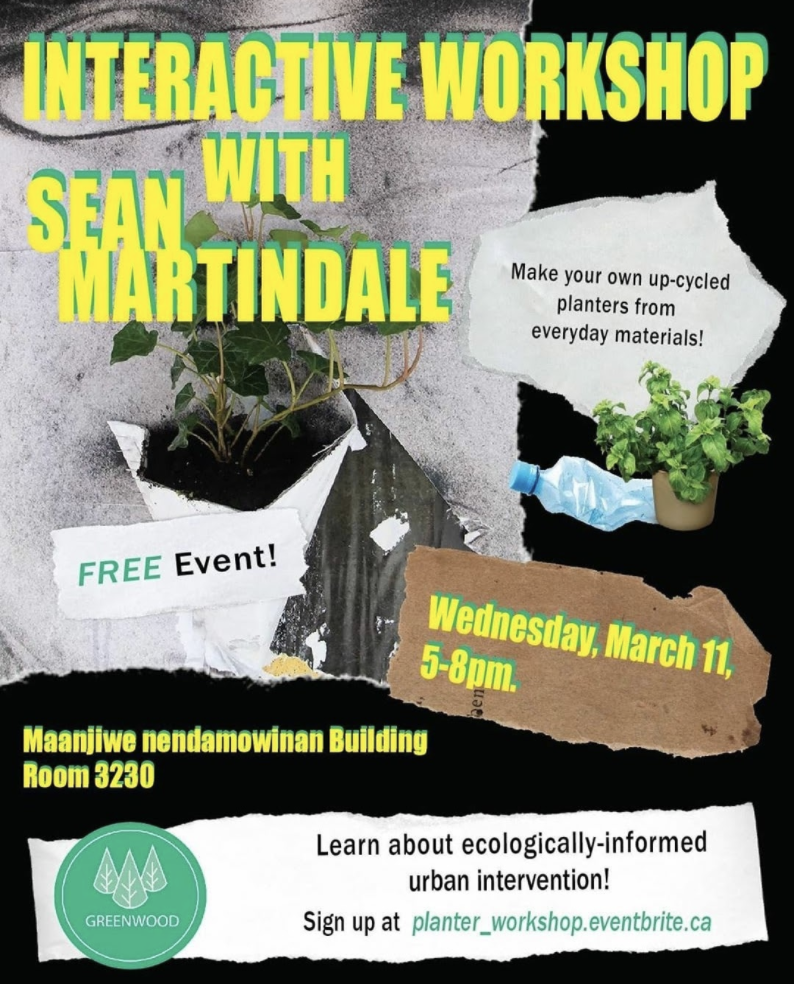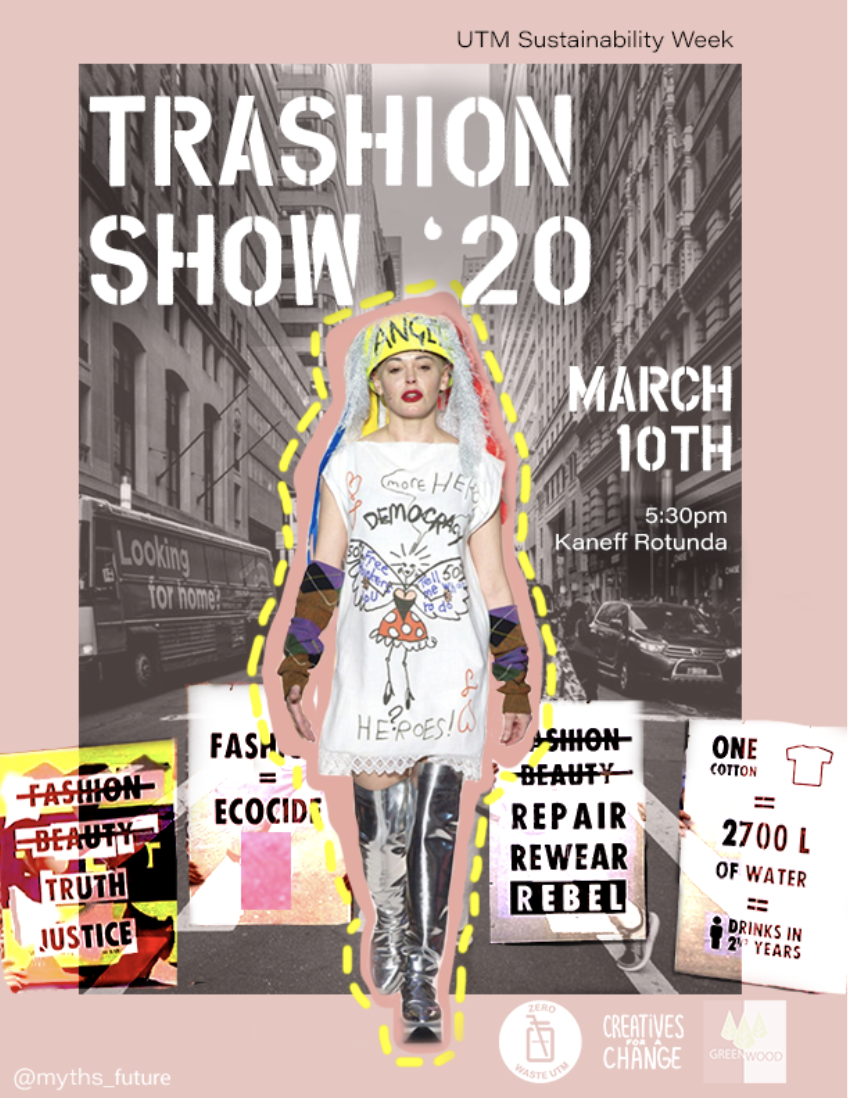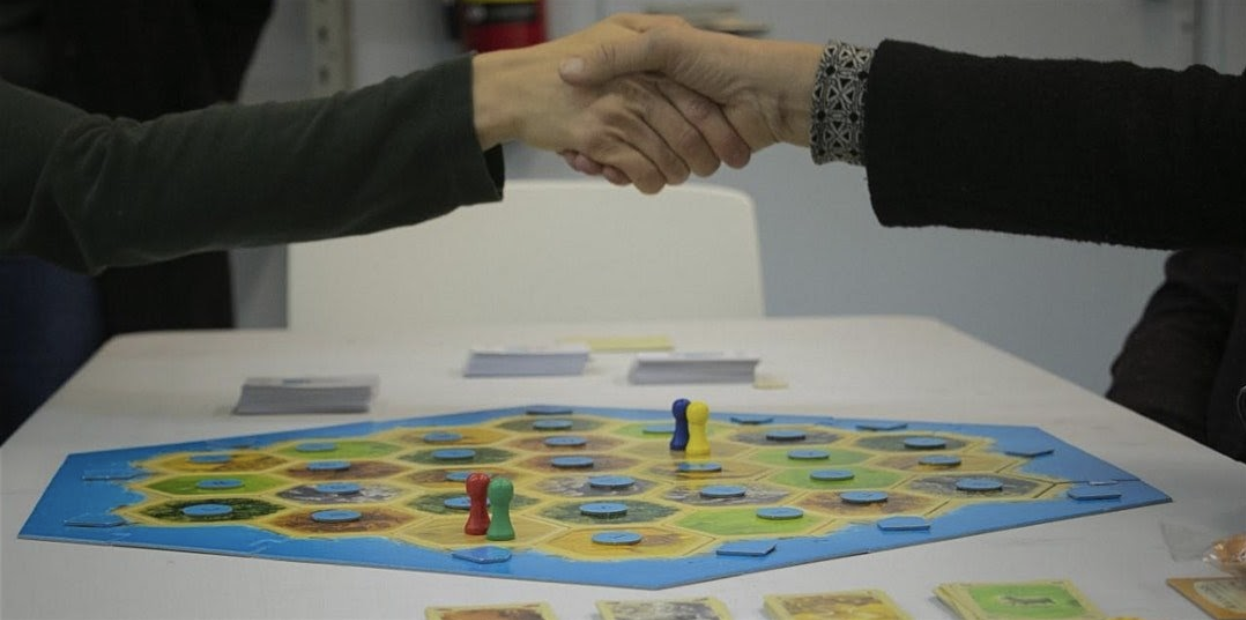(Dis)Placed: A Virtual Artist Spotlight and Talk Series
January - February, 2021The Greater Toronto and Hamilton Area is home to many diasporic communities. Approximately half of the region’s current population was born outside of Canada—making the region a natural place for meaningful discussions on the complexities of movement, language, and community belonging. What does it mean to be Canadian, when Canada has become a crossroad for such a rich diversity of peoples? Are traditional definitions of “home” meant to be challenged, reconciled, stretched, or embraced in our current geopolitical context? In 2021, Greenwood engages with contemporary discourses in Ontario’s diasporic experience. (Dis)placed: A Virtual Artist Spotlight and Talk Series considers the fallout of westernization and the effects of displacement, cultural belonging, and visibility on our local communities.
Greenwood’s forthcoming programming series takes the form of two artist talks hosted in tandem with a collection of five virtual artist spotlights. (Dis)Placed showcases the diverse and intergenerational interpretation of diaspora by artists and arts activists in the Greater Toronto Area. In response to a year of unprecedented events, Greenwood— an initiative led by Blackwood Gallery Work-Study students— considers the importance of providing a space for emerging voices to grapple with cultural movement and belonging complexities. (Dis)Placed invites emerging and mid-career artists to unpack these present-day experiences, activating various perspectives on space, belonging, and place in our communities.
Time Out: A Digital Publication
August 4, 2020
The first confirmed COVID-19 case in Canada reached public knowledge in late-January.1 A month and a half of staggering numbers later, on March 13, Quebec became the province to declare a public health emergency with other provinces following suit shortly after.2 To date, Quebec has the largest number of confirmed COVID-19 cases in Canada—59,131.3 On neighbouring soil, the United States of America has the highest number of confirmed cases globally, reaching 4,388,566, with many states already reopening their economies while the numbers continue to grow at an alarming rate.4 Recommendations by the Centres for Disease Control are being thrown away like single-use masks, today’s equivalent to plastic straws. The tension between this seemingly short recorded timeframe of the virus’s spread and the experience of COVID-19 time (the temporal and spatial slippages we are experiencing) have been occupying our minds at Greenwood UTM.
The last few months have generated no shortage of noise on the subject of the pandemic, but Greenwood, the student-led initiative by Blackwood Gallery Work Study students, noted the importance of providing a space for emerging voices grappling with these circumstances. Greenwood has thus collaborated with a number of these emerging voices—student voices—in hopes of broadcasting a unique perspective on the current state of affairs. Taking the form of a digital publication, Time Out engages with these current circumstances through various perspectives on time and place that the current time out from our previous normal makes possible.
To say the quarantine measures have drastically impacted our society is an understatement, but no less important is the opportunity it has provided for all of us to reflect on the tenets and operations of such an organized society, its pillars, and the processes of unlearning required to take down these pillars. All inextricably linked and entangled, these months are littered with feelings of unease and uncertainty. We are still collecting that litter. There are still pillars to collapse, preconceived notions to unlearn, and systems of linkages to be explored; the link between privilege and access to healthcare, between the cost of living and CERB, between quarantine and loneliness, between the “China Virus” and scapegoat racism.5 Numbers, slogans, graphs, diagrams, catchwords—all sorts of information have flooded information outlets for better and for worse. Below we map out 1500 connections between themes and concepts our generous contributors explore, connections which have provided us equal parts insight and disorientation:
The last few months have generated no shortage of noise on the subject of the pandemic, but Greenwood, the student-led initiative by Blackwood Gallery Work Study students, noted the importance of providing a space for emerging voices grappling with these circumstances. Greenwood has thus collaborated with a number of these emerging voices—student voices—in hopes of broadcasting a unique perspective on the current state of affairs. Taking the form of a digital publication, Time Out engages with these current circumstances through various perspectives on time and place that the current time out from our previous normal makes possible.
To say the quarantine measures have drastically impacted our society is an understatement, but no less important is the opportunity it has provided for all of us to reflect on the tenets and operations of such an organized society, its pillars, and the processes of unlearning required to take down these pillars. All inextricably linked and entangled, these months are littered with feelings of unease and uncertainty. We are still collecting that litter. There are still pillars to collapse, preconceived notions to unlearn, and systems of linkages to be explored; the link between privilege and access to healthcare, between the cost of living and CERB, between quarantine and loneliness, between the “China Virus” and scapegoat racism.5 Numbers, slogans, graphs, diagrams, catchwords—all sorts of information have flooded information outlets for better and for worse. Below we map out 1500 connections between themes and concepts our generous contributors explore, connections which have provided us equal parts insight and disorientation:
As a generation that grew up on screens, we might be susceptible to strange, slippery and blurry relationships with the numbers that populate our digital environment: infection levels, death counts, streaming rates, storage space, bank account balances. To effectively Work From Home, I have purchased a new computer to replace my decade old laptop. 250 GB of storage space used to be plenty, but now many scoff at anything less than 1TB. This past week a house party of 200 was shut down a block over from my house, a mirror image of the crowds spilling out from my city’s hospitals due to overcrowding.
Numbers circle, scroll and fill our heads and feeds throughout the pandemic. In the motion-blur left behind by the afterimages of each day’s numbers, I think of the blending of boundaries that take place in Ashley Snook and Ivanovstoeva’s work. As much as human blends into and pushes up against nonhuman, I think of how learning simultaneously means unlearning, and “normal” is consistently challenged with each passing day.
Compared to life pre-quarantine, I have been doing more emailing than ever. I stopped checking my health app’s pedometer sometime in April as the drop from tens of thousands to a few hundreds looked a lot like economic graphics, and an inverse of reported cases in the locale. These days I have been wondering if my cursor travel distance combined with my email travel distance can make up for that dip— the dip in distance travelled, the dip in connection. I see Emily Roe and Katy Poirier’s work and I see myself, once more feeling at ease and content in my surroundings; home becoming something different the more time I spend indoors.
With so much of my day spent at my desk and so little space for thoughts to breathe, time indoors has replaced the reflection period that my daily commute once occupied. With this shift of presence from physical to digital, much of the (now digital) landscape becomes overwhelmingly slippery. My mind bounces from Esther Kim’s work’s engaging visceral power,to notions of displacement in Liam Mullen’s work, then once more to fantasy and identity in Troy A. Lawrence’s work, then once more to uncertainty and constriction in Lele Lin’s work. For better or worse—mostly for better—emergent, connective qualities are easier than ever to pick up on as everyone moves into literal networked thought.
So much is unfathomable. Our frequented galleries and collective spaces had few pre-existing safety nets to rely on in response to COVID-19 health and safety regulations. Shifting much of my activity from the physical realm to the digital realm, I had no idea how much I would rely on the espresso machine I purchased secondhand for $50, or how many times over that amount I would spend at furniture stores upgrading the home office from an ironing board to something slightly more substantial. At my new desk, Discord, an instant messaging client, has been filling ⅕ of the void that studio time has left, but one thing I particularly miss is the ability to debilitate my comrades in the studio or at the art opening with my coffee breath. I think of once inhabiting a different space-time, I think of these small but meaningful absences, poignantly reflected in the work of Karina Garcia Casanova, Sabryna Ekstein, Hadia Hassan, and Rachel Chen, each bringing attention to the (dis)connection to our environment.
Interactive Workshop with Sean Martindale
March 11, 2020

Greenwood UTM’s second free workshop of the 2019 year invited Sean Martindale, a Toronto-based interdisciplinary artist, to talk to participants about his work in his ecologically-informed art practice. Following the presentation, guests had a chance to have an open conversation with Martindale, as well as participate in a hands-on upcycling project led by Martindale where guests created simple planters out of salvaged everyday materials.
Sean Martindale is an internationally recognized, award-winning interdisciplinary artist and designer based in Toronto, Canada. His interventions activate public spaces to encourage engagement and often focus on ecological and social issues. His playful works suggest alternate possibilities for existing spaces, infrastructures, and materials found in urban environments. Frequently, Martindale uses salvaged goods and live plants in unexpected ways that prompt conversation.
In 2018, Martindale had the honour of being Harbourfront Centre’s inaugural Visual Artist-in-Residence. In 2018 and 2019, Martindale and his collaborator, JP King, were also the first Artists-in-Residence with the City of Toronto, Solid Waste Management Services.
In 2018, Martindale had the honour of being Harbourfront Centre’s inaugural Visual Artist-in-Residence. In 2018 and 2019, Martindale and his collaborator, JP King, were also the first Artists-in-Residence with the City of Toronto, Solid Waste Management Services.
The Trashion Show ‘20
March 10, 2020

For the second annual Trashion Show, Greenwood UTM teamed up with Zero Waste UTM, UTM Creatives for a Change, the UTMSU, and the UTM Masters of Sustainability Program, to host their most ambitious event yet. Held in the Kaneff Rotunda, the Trashion Show ‘20 doubled the scale of the first event, complete with over 50 designs, art installations, live music, and more! With a bustling venue and plenty of guests, the Trashion Show ‘20 was based around the word rebellion, calling for the designers to use their creative and sustainable designs as a way to rebel against the fast fashion industry; one of the largest contributing factors to the global climate crisis. The winner of the Trashion Show ‘20 was Gladys Lou, with a dress made entirely from paper receipts. In second place, Ananda Sophie Quadros de Andrade presented two formal-style evening dresses made from used materials. Third place was awarded to Justine Lyn, the first place winner of the Trashion Show ‘19, for her collection of designs made from used fabrics, focusing on current fashion trends.
Unsettling Settlers: Intervention
February 28, 2020

The first in a series of free workshops, Greenwood UTM had invited multi-disciplinary artist Golboo Amani to host a play test and discourse event entitled Unsettling Settlers: Intervention. The goal of Amani’s project is to interrupt the colonial narrative of the board game Settlers of Catan by employing strategies that strengthen players’ abilities to imagine critical alternatives and counter hegemonic narratives of settlement. In Unsettling Settlers: Intervention, players work through strategies of allyship by trading and collecting renewable resources, blocking expansion and development, building treaties and reclaiming land on a virtual landscape.
Multi-disciplinary artist Golboo Amani is best known for her performance and social practice works. Amani utilizes familiar social engagements and patterns of performativity as ready-made sites for aesthetic intervention and critical engagement. Amani’s work often addresses the conditions of knowledge production that render epistemic violence as invisible, insignificant and benign. Much of their work focuses on interventions or alternatives to formal sites of pedagogy to include forms, contexts and content normally excluded from institutionalized knowledge production. Their work has been shown nationally and internationally in venues including the Toronto Biennial of Art, Art Gallery of York University, Creative Time Summit, Art Gallery of Ontario, Articule, XPACE Artist-Run Centre, Encuentro: Hemispheric Institute, Union Gallery, Blackwood Gallery, Rhubarb Festival, FADO Emerging Artist Series, TRANSMUTED International Festival of Performance Art (Mexico City), 221A Artist-Run Centre, and the LIVE Biennial of Performance Art.
The Scream: A 1-Minute Expression of Eco-Anxiety
September 19, 2019
In advance of the Global Climate Strike, Greenwood invited students to express their eco-anxieties through a minute-long opportunity to scream. Greenwood UTM hosted four Scream sessions—one at noon each day from September 16-19 to ensure that as many staff members and students as possible would be able to participate. The act of screaming both relieves the tension of our collective eco-anxiety, but also materializes the voice of the student body, so that it can be heard by the entirety of UTM, demanding change and pushing for more green initiatives on campus. The minute-long scream was held alongside the Blackwood Gallery’s banner-making workshop station, as well as their letter-writing station supporting students in contacting local politicians and leaders for environmental action.
The Trashion Show ‘19
March 15, 2019

Alongside the UTMSU, ZeroWaste UTM, UTM Creatives for a Change and Style & Profyle, Greenwood UTM co-hosted this collaborative event promoting sustainability through fashion. The first ever annual Trashion Show called for artists and designers to submit their sustainability- and environmentally-themed work. The event drew crowds, with artists, guests, models, and judges filling the UTM’s Blind Duck Pub. Sustainable designs and artwork were judged. Justine Lyn and Chelsea Dalton were awarded first and second place respectively for their designs, and Mira Szuberwood and Laura Colacci were awarded first and second place respectively for their artwork.
Green Space: Seeding Change at UTM
March 8, 2019
As their debut event, Greenwood UTM hosted Green Space: Seeding Change at UTM, an environmental fair with the purpose of creating conversation around the global climate crisis all while fostering conversation with the UTM student body on what we can do on campus to live more sustainably. This event included booths by Free the Children at UTM, Zero Waste UTM, and The Riverwood Conservancy, and various activities promoting sustainability, including clothing swaps, the creation of a Greenwood UTM trash installation, and a sustainability-themed campus-wide scavenger hunt. Green Space: Seeding Change at UTM took place in the CCT Atrium (UTM) on March 8, 2019.